- Details
- Hits: 1122
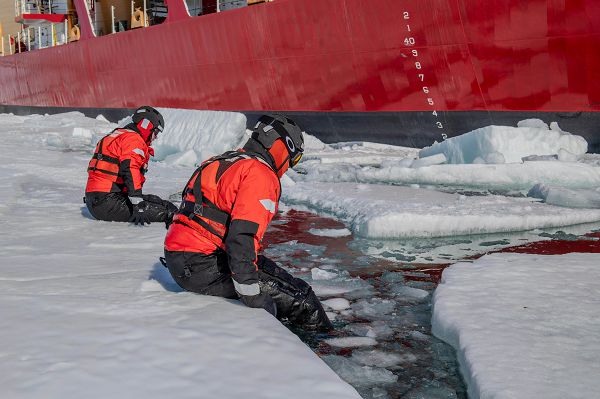
McMurdo Sound, Antarctica. (January 12, 2024): When we think of the Coast Guard, we often imagine fast boats chasing drug dealers and performing daring rescues at sea. What many may not realize is that ice rescues are one of the Coast Guard’s major missions. In this photo by Petty Officer 3rd Class Ryan Graves, Petty Officer 1st Class Joshua Tangermann and Petty Officer 2nd Class Harrison Bauer lower themselves into the water while practicing ice rescue techniques in frozen Antarctica. The USCG holds these training sessions each year during Operation Deep Freeze, an icebreaking and resupply mission to the South Pole. (More on this in our next newsletter).
In these rescues, Guardsman are fighting the “1-10-1” rule; once in the water a victim has one minute to control their breathing, 10 minutes before they are unable to rescue themselves, and one hour before they will succumb to hypothermia. Hypothermia is when your body loses heat faster than it can produce it. Symptoms of hypothermia begin with shivering, slurred speech, and slow, shallow breathing. Later stages include clumsiness, drowsiness, confusion, and loss of consciousness.
- Details
- Hits: 1034
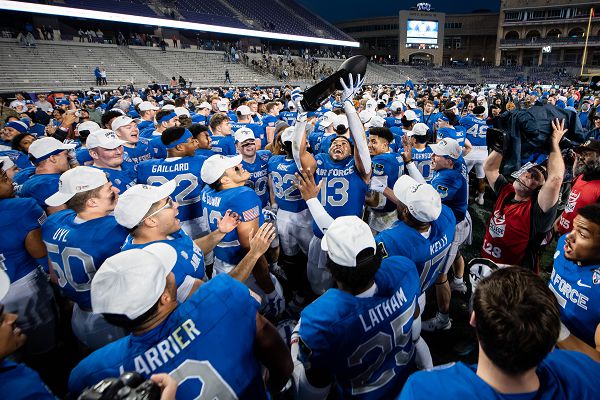
Fort Worth, Texas. (December 23, 2023): In this photo by Rayna Grace, the U.S. Air Force Academy’s Football Squad celebrates their win against James Madison University at the Lockheed Martin Armed Forces Bowl game. The Falcons capped their 2023 season with a 9-4 record defeating JMU, 31-21, in a wild game at Amon G. Carter Stadium.
The Falcons are a member of the Division 1-A Mountain West Conference and play their home games at Falcon Stadium in Colorado Springs, Colorado. These football players/cadets are full-time military who are studying to become Air Force officers. Upon graduation, they will serve a minimum of six years as the new generation of Navy leaders.
- Details
- Hits: 853
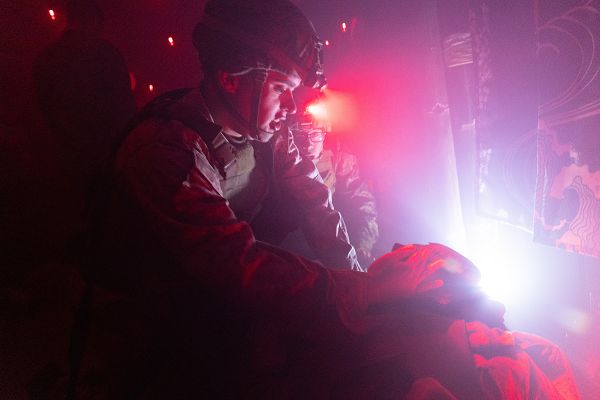
Camp Hansen, Okinawa, Japan. (January 3, 2024): In the movies, a wounded soldier cries out “medic” hoping help can reach them before it is too late. In today’s military, EVERY combatant is equipped with basic emergency medical skills via the Combat Life Saver Course (CLS). In this photo by Corporal William Wallace, PFC Johnathan Hernandez, an inventory management specialist with 5th Air Naval Gunfire Liaison Company, III Marine Expeditionary Force Information Group, checks a simulated casualty for trauma during the CLS course’s final exam. The aim of the program is to eliminate preventable combat deaths by equipping every servicemember with the essentials they need to stabilize a patient until a medic arrives.
Officially called Tactical Combat Casualty Care, the 40-hour course teaches the advanced skills needed to render effective care to casualties in the absence of a corpsman. The course is designed around the three stages of intervention: Care Under Fire, Tactical Field Care, and Casualty Evacuation.
Care Under Fire is just like it sounds, emergency treatment delivered while still under enemy fire. These interventions include emergency tourniquet use, blood control due to gunshots, explosions, or other trauma, securing an airway, and providing wound care.
Tactical Field Care involves steps rendered by first responders or prehospital medical personnel (primarily medics, corpsman, and pararescuemen) while still in the tactical environment. These levels of care are covered by the acronym MARCH which stands for:
Massive hemorrhaging controlled using tourniquets, hemostatic dressings, and pressure dressings. Airway management to clear obstructions and Respiratory care to ensure a patient is getting sufficient oxygen. Circulation is managed through intravenous fluids and, finally, steps are taken to prevent Hypothermia. The CLS also teaches students how to communicate with evacuation platforms to call for ground or air medical support and how to package a casualty for transport. The training culminates in a 50-question written exam and a hands-on practical test where students need a 70% minimum score to pass.
- Details
- Hits: 2627
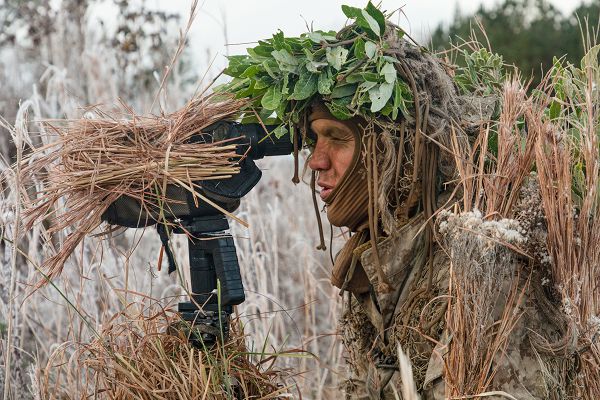
Camp Lejeune, North Carolina. (December 31, 2023): It is the end of an era for one of the Marine Corp’s most storied professions, the Scout Sniper. In this photo by Lance Corporal Zachary Candiani, Corporal Sean Hall conducts reconnaissance during the last iteration of the famous Scout Sniper Course at the School of Infantry-East. After a century of heroic combat action, the Scout Sniper is to be incorporated into regular infantry companies to provide precision shooting. The closing of the school is part of the Marine Corp’s Force Design 2030, an effort to modernize infantry tactics to confront emerging threats like China.
In the past, Marine infantry battalions had dedicated sniper platoons made up of 18 Scout Snipers who provided precisions fires and information-gathering for the commander. According to the Marines, infantry company scouting abilities were “insufficient” to give commanders the all-weather reconnaissance they need. To remedy this, the Corps took the precision firing expertise of Scout Snipers and spread them across the force. When the transition is complete, marksmen and their sniper weapons would be distributed among infantry companies but not dedicated as platoons as they once were.
- Details
- Hits: 2889
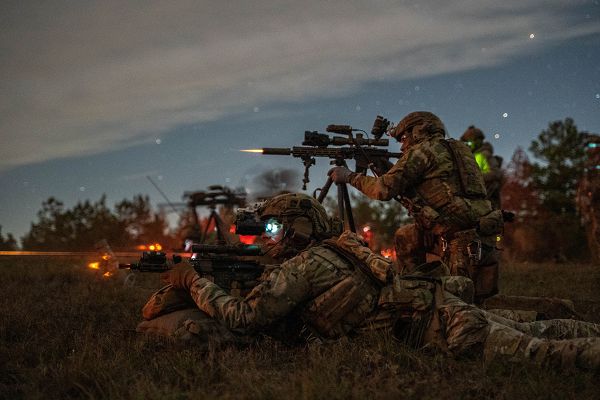
Fort Johnson, Louisiana. (January 2, 2024): Since before the Civil War, America has relied on the Army Rangers to tackle its most dangerous assignments. In this photo by Sergeant Paul Won, Rangers assigned to the 75th Ranger Regiment conduct a live fire training exercise to hone their marksmanship skills. The 75th Ranger Regiment is the U.S. Army's premier special operations direct action raiding force that trains relentlessly to be ready to deploy anywhere in the world at a moment's notice.
The 75th Rangers conduct direct action raids in hostile environments, often killing or capturing high-value targets. Other missions include seizing airfields, doing special reconnaissance, recovering personnel, and clandestine insertions. They are an all-volunteer force with an intensive screening and selection process that ensures only the very best can wear the Ranger tab. To even be considered for the unit, candidates must pass the infamous Ranger Fitness Test which consists of a minimum of fifty-eight push-ups, sixty-nine sit-ups, six pull-ups, and a five-mile run in 40 minutes or less.
But that is only the beginning.
- Details
- Hits: 952
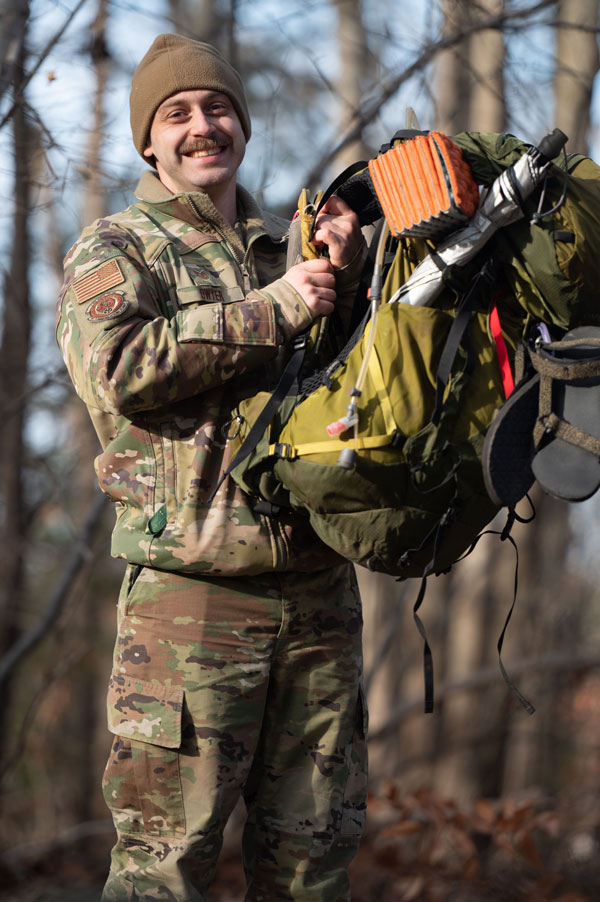
Pease Air National Guard Base, New Hampshire. (January 2, 2024): Some folks see the impossible and say, “no way”. Others see a daunting obstacle and ask, “why not”? Technical Sergeant Alan Dwyer, an operations network administrator with the 157th Communications Squadron, is just such a person. In this photo by Technical Sergeant Victoria Nelson, Dwyer poses proudly in his hiking gear after conquering the Appalachian Trail, one of the world’s most challenging achievements.
Beginning in March 2023, Dwyer hiked through fourteen states hiking over 2,200 miles at elevations as high as 460,000 feet, a remarkable feat only a select few have accomplished. According to the Appalachian Trail Conservancy, 75% of people who attempt the trek do not complete it. This legendary trail, which begins at Springer Mountain, Georgia, and stretches along the east coast all the way to Katahdin, Maine, is the longest foot path in the world. The challenge is so popular that more than three million people traverse segments of the trail each year.


